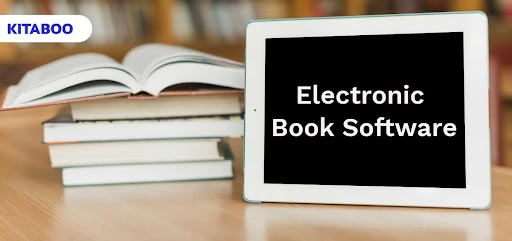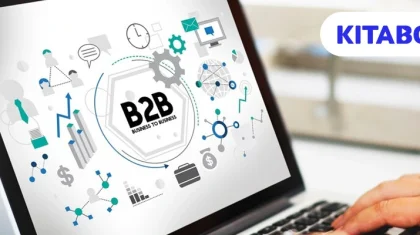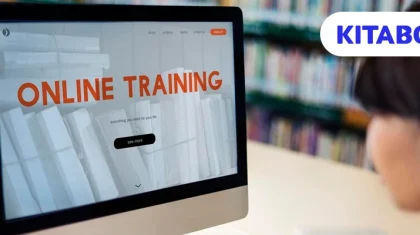
Elevating Education with Electronic Book Software
eBooks, short for electronic books, have taken the world by storm. They are convenient, portable, and accessible and provide the readers with a variety of tools to personalize their reading experience.
In fact, according to reports, the market for eBooks is flourishing and is forecasted to grow at a CAGR of 7.7% between the period of 2022-2027. This is probably due to the convenience electronic book software delivers to educators and publishers as well, in addition to benefiting the readers.
Let’s understand in detail how electronic books and eBook solution providers like KITABOO are elevating educational systems through their expanded functionality and interesting features.
Table of Contents
II. 7 Ways Electronic Book Software Elevates Education
- Instant Delivery
- Portability
- Cost-Effectiveness
- Interactivity
- Tailor-Made
- Collaboration
- Features
- Notes
III. Wrapping Up
What are eBooks?
Technically speaking, an eBook is a digital book, a body of text and media that is distributed electronically and displayed on the screen of devices.
Explained in simpler terms, an eBook is just a digital avatar of a book – however, it has several more features and tools you can use to personalize how you read.
For example, eBooks allow you to adjust the font size according to your reading comfort, which is excellent for young and senior readers. You can also adjust the screen brightness for a more comfortable reading.
7 Ways Electronic Book Software Elevates Education
There are countless ways that electronic book software can help transform traditional pedagogical approaches.
Various aspects, like remote learning, educator convenience, student preferences, etc., can be made more efficient and learning delivery improved. Some of these ways are:
1. Instant Delivery
Education relies on the efficient distribution of learning materials equitably to all the members of a classroom. Electronic books can be instantly shared over all types of digital channels, like instant messaging, emails, portable storage devices, etc.
There is no longer the need to wait in a queue to have access to physical learning materials when every student can immediately access their own copy of the eBook. This makes it easier for the educators as well.
2. Portability
Education no longer has to be synonymized with lugging heavy backpacks to classrooms. With electronic book software, all students need to do is carry a device of their preference using which they can access the eBook being referred to in the class.
The portability of eBooks tremendously changes the way the education system functions. The compatibility with screen-based devices of all sizes makes eBooks a game changer in the niche of education.
3. Cost-Effectiveness
One of the most transformative ways that eBooks have elevated the education system is by eliminating redundant costs.
Paper is not only expensive but also leaves a strong environmental impact. Transferring educational resources to a digital platform helps educators significantly reduce their carbon footprint while offsetting the costs of printing and paper.
It also makes it easier for students to have access to this material more readily rather than waiting for physical books.
4. Interactivity
A world of educational possibilities opens up with digital resources. eBooks achieve what printed materials cannot – driving student engagement by preventing distractions and enabling better participation in the lesson through introducing interactive elements.
eBooks have modules that are gamified, animated, interactive, and even have quizzes and trivia inserted in the lesson strategically, which helps students stay invested in the lesson. This makes it possible to derive enhanced learning from each module.
5. Tailor-Made
Traditional educational methods relied on prescribing textbooks to students, who would have no choice but to read them even if there was no engagement.
With eBooks, educators can deliver tailor-made content that suits the learning methods, capabilities, and capacities of each individual, enabling higher participation and delivering better value.
It helps students to compete equitably with their peers when learning is made customizable and paced to their capacity.
6. Collaboration
The traditional education system doesn’t make it easy for educators to collaborate on creating modules for students.
However, with eBooks, it is possible for various teachers to come together online – no matter where they are – and work on educative projects together.
This helps them create exhaustive modules that cover all bases and are a comprehensive consolidation of all the important concepts of a subject. Students benefit from learning through well-designed courses this way.
7. Features
eBooks have stellar features – both for the learners and educators. For example, the “Search” feature allows readers to navigate to the desired section in the eBook quickly, wasting no time or effort in searching.
Other features like text-to-speech help boost inclusivity in the classroom, enabling students with reading difficulties to remain level with their peers by listening to the lesson instead of reading.
The “Bookmarks” feature helps students tag the sections they would like to revisit.
8. Notes
Note-taking is an important part of learning. It helps students to run everything by their own hand and recall it later.
Note-taking has become easier with eBooks that provide spaces to scribble or help students consolidate or highlight important concepts as they go in a dedicated space.
It eliminates the need to carry notepads or pens, helping students relieve the load in their backpacks.
Wrapping Up
eBooks are everywhere today – whether you wish to engage in a hobby, whether you wish to learn a new skill, or whether you are a student and need to brush up on a concept quickly. Their existence has made education tremendously efficient and easier for everyone involved.
Educators can now deliver content that is more engaging and comprehensive, while students can customize their learning based on their skill and capacity. Creating eBooks is simpler and more efficient by leveraging the services of digital textbook providers, like KITABOO.
KITABOO has something for everyone – publishers, K-12 educators, higher education, corporate trainers, etc. They help you create an eBook and enhance it with a variety of excellent, functional features and deliver it efficiently to the recipients.
To know more about how KITABOO can help you, visit their website.
Contact our expert team now and get started!
To know more, please write to us at contact@kitaboo.com.
Suggested Reads:
Discover how a mobile-first training platform can help your organization.
Kitaboo is a cloud-based platform to create, deliver & track mobile-first interactive training content.



